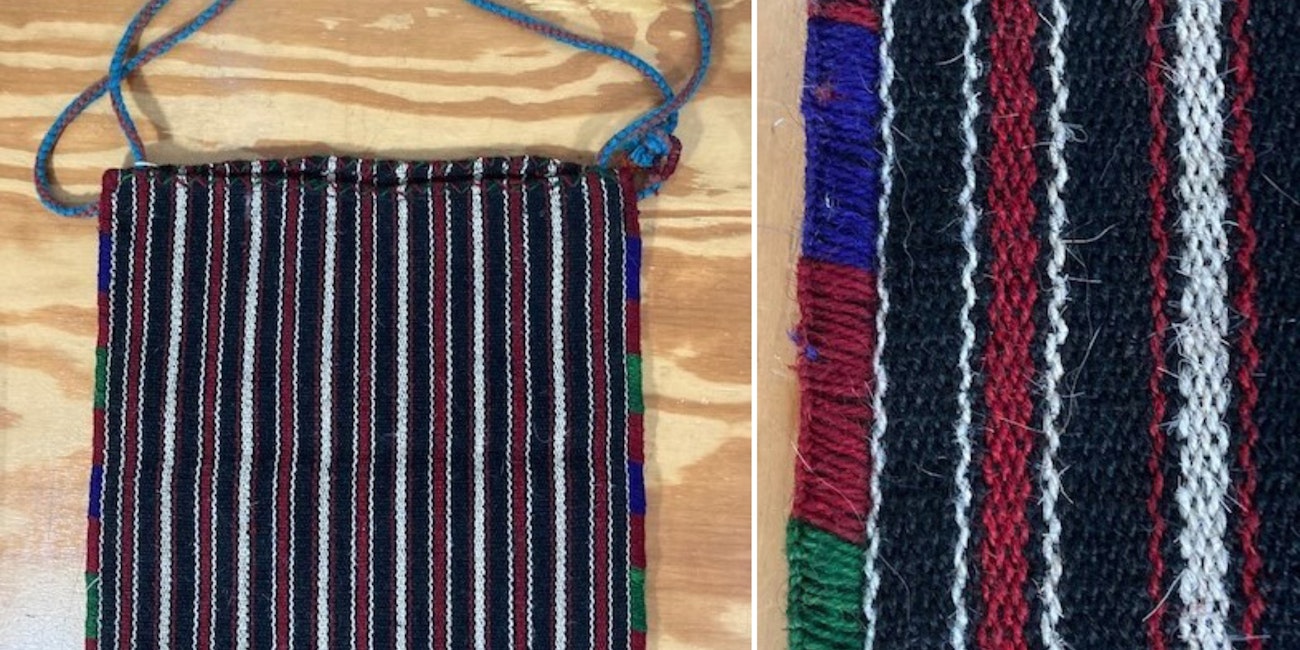When I was a teenager, my maternal grandmother gave me three tagaria (singular: tagari) to supplement my dowry. Tagari (Ταγάρι) is a handwoven, rectangular, wool bag in which Greek shepherds and farmers carried their lunch (such as bread and cheese), a thermos of coffee, and other items such as fatwood to start a fire. My grandparents used these bags to carry their lunch when they harvested pine resin from resin bags that they had previously installed on the pine trees on their small property. They also shepherded a small flock of sheep, and they used their wool to make tagaria and blankets. This is the story of how my grandparents made tagaria.
Every summer, my grandparents organized a “sheep-shearing feast.” The whole family, neighbors, and friends participated in shearing the fleece of the sheep. Traditional music, wine-drinking, dancing, laughter, and the delicious aroma of roasted lamb filled the air. Children, including myself (I was a little girl at that time), ran around playing. The feast lasted all day, and the sheared wool was packed into burlap sacks and kept overnight in a storage area.
The next day, my grandparents loaded the burlap sacks of wool on their donkeys and carried it to a location with water pools to wash from it the lanolin, dirt, and manure. They used these wash pools because there was no running water in their house in the mountain village of Paliovrysi in the region of Evoia. The only water source was a water spring that supplied the entire village. My grandmother, as did all housewives in the village, had to walk to the spring with her donkey, fill her buckets with water, load them on the donkey, and carry them to the house for cooking, washing, and bathing.
After washing the wool, my grandparents dried it in the sun, cleaned it of burrs and twigs, sorted it by color (white or brown), and sometimes dyed it by boiling it in huge pots outside. At home, I often watched my grandmother in fascination combing the clean wool with a spiked hand comb and later spinning it on her spindle and winding it into balls of yarn. Then, she gave the yarn to her neighbor who had a loom, and she turned it into beautiful blankets, rugs, and tagaria. For the tagari, she wove one single rectangular piece, folded it in half, and handsewed the two sides together using blanket stitch and wool thread. Then she braided a long shoulder strap and sewed the ends of it on either side of the tagari. Sometimes, she added a fringe at the bottom.
 One of Harikleia’s tagari (left), detail of the blanket stitching used to create the side seams of the bag (right)
One of Harikleia’s tagari (left), detail of the blanket stitching used to create the side seams of the bag (right)
My three tagaria are about 18 x 15 inches (45.7 x 38.1 cm) with one or two braided shoulder straps. Their weave is extremely dense, and it feels rough to the touch. Two of my tagaria have red, black, and white stripes. The third one is a black and white plaid with a fringe and a blue crochet edge at the top. I am proud to have these unique items in my dowry as part of my Greek heritage and in remembrance of my grandparents. Today, mountain villagers still make tagaria, but mainly as souvenirs for tourists. I have seen such souvenirs myself at the Monastiraki market in Athens, Greece.
Harikleia Sirmans is known for her many talents. Among other things, she’s an academic librarian and an expert dressmaker. She loves sewing and needlework, and every evening, she crochets to relax. She was born and raised on the island of North Evia, Greece. Today, she lives with her husband in Valdosta, Georgia, and she makes beds, sweaters, and collars for their furry kids. Visit her at grecianneedle.com.

